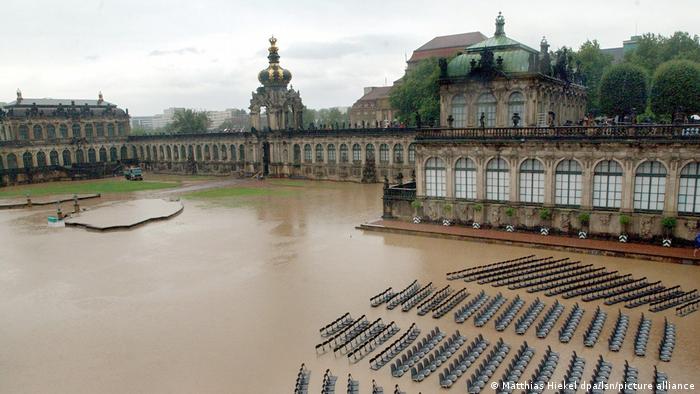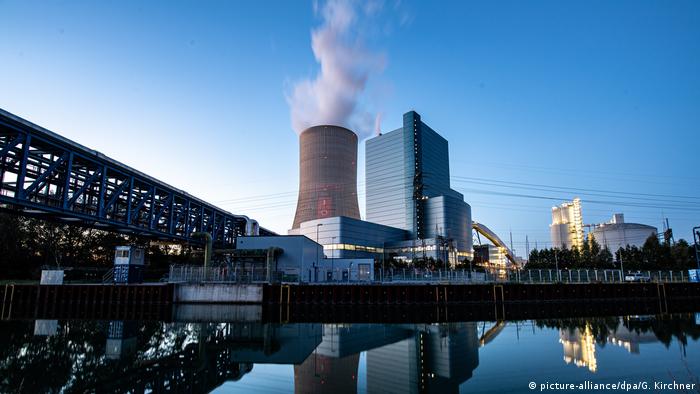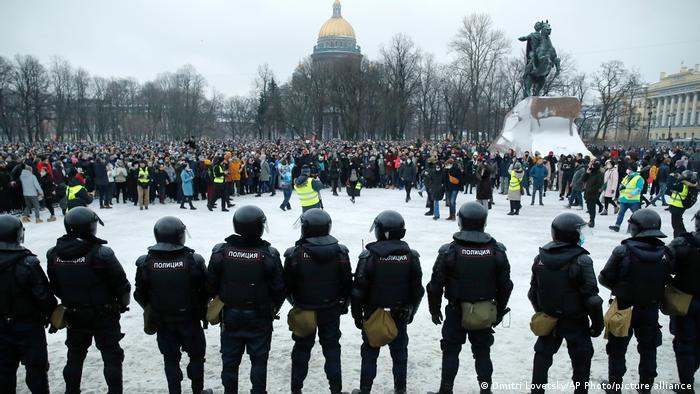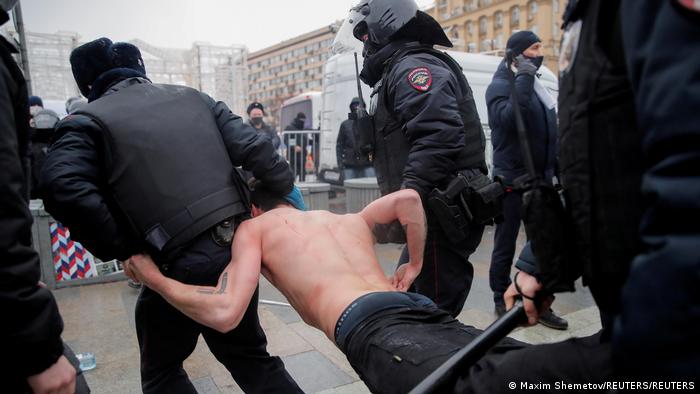Climate change hit poorest countries hardest in 2019
Heavy rain and storms exacerbated by climate change particularly affected East Africa, Asia and South America in 2019, according to the latest Climate Risk Index.
Heavy rain and storms exacerbated by climate change particularly affected East Africa, Asia and South America in 2019, according to the latest Climate Risk Index.
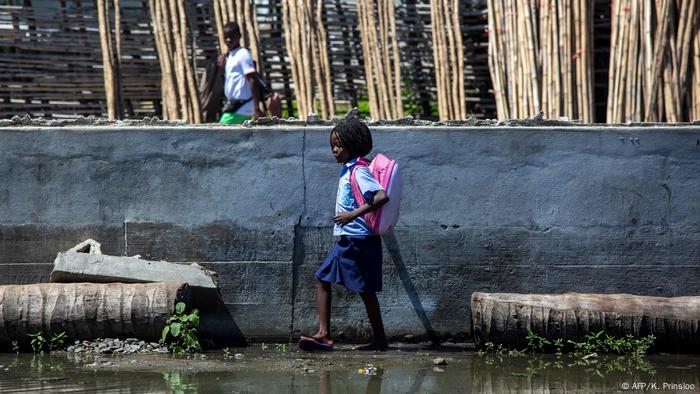
Rains have flooded cities that were still being rebuilt a year after Cyclone Idai devastated Mozambique
Violent storms caused more damage than any other type of extreme weather in 2019, with poorest nations bearing the brunt, according to a study published Monday by environmental organization Germanwatch.
Made stronger by climate change, they wreaked havoc across the world.
"On the one hand, there was Cyclone Idai on the southeast coast of Africa, which caused damage in Mozambique, Zimbabwe, Malawi; and, on the other hand, a hurricane in the Caribbean that hit the Bahamas," said David Eckstein, a policy advisor at Germanwatch and co-author of the report, which has been published each year since 2006.
More than 1,000 people lost their lives Idai in Mozambique, Zimbabwe and Malawi in March 2019, causing "catastrophic damage and a humanitarian crisis," the authors wrote.
The global index is based on data from the German reinsurance company Munich Re. It compares the number of deaths and property damage caused by extreme weather to the number of inhabitants and the gross domestic product of the country in which it strikes.
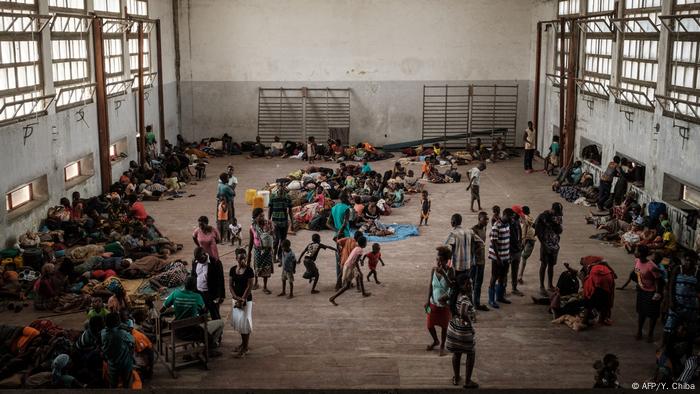
Cyclone Idai was more devastating than similar-strength storms that year because of a lack of early-warning systems
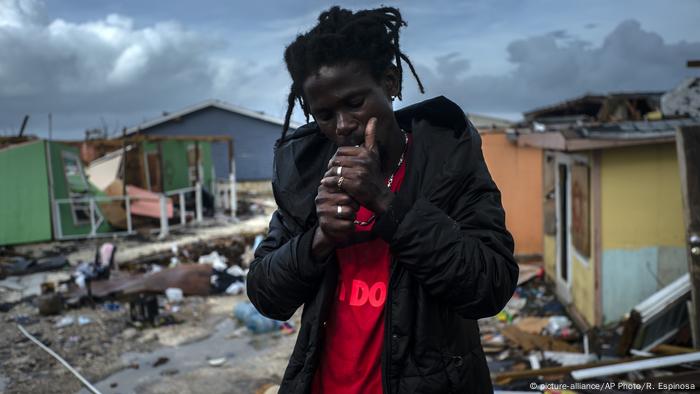
Hurricane Dorian devastated the Bahamas in 2019 and unleashed flooding that reached up to 8 meters in some areas
Major damage from storms and heavy rainfall
Japan was also hit hard by Typhoon Hagibis, which killed 290 people. Prolonged rainfall caused more than 2,200 deaths in India. Several hundred people also died in Afghanistan, South Sudan and Niger as heavy rains triggered landslides and destroyed homes.
In Bolivia, heavy rains led to flooding; 34 people died and 23,000 families were left homeless. Fires also destroyed 2 million hectares of forest, grassland and protected areas.
While storms have always claimed lives and damaged homes, they are "increasing in intensity, and that can be attributed to climate change," said Eckstein. "We did interviews with people from Mozambique who said that there have always been cyclones on the southeast coast of Africa, but never with the ferocity as in 2019 with Idai."
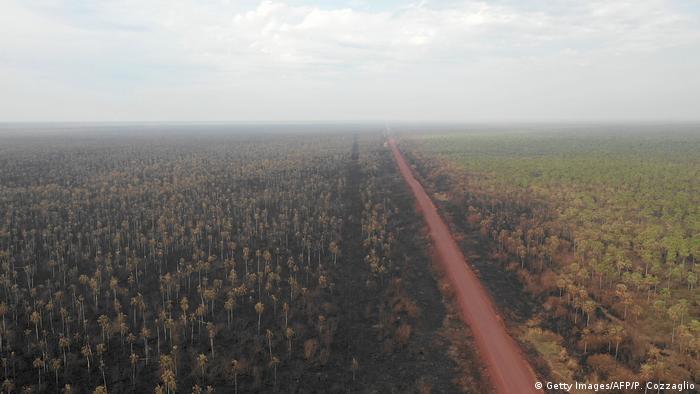
Bolivia's Pantanal was ravaged by wildfires in 2019 and again in 2020
More severe cyclones with every tenth of a degree
In 2019, all 10 of the countries most severely affected by extreme weather suffered from heavy floods, according to the report. Last year, large amounts of rain hit eight of the 10 most-affected countries, while two others, Germany and Canada, were exposed to extreme heat.
"The rain actually causes the most damage in a cyclone due to the extreme amounts of water," said Eckstein. "Climate change plays a special role in this on several levels."
One reason for the increase in rain is that the sea and the air are getting warmer as the planet heats. Warm air holds more moisture, which means more rain.
Climate scientists say storms are not becoming more common, but, rather, stronger. The report projects that the number of tropical cyclones that are classed as severe will increase with every tenth of a degree rise in average global temperature.
WORLD HERITAGE UNDER THREAT FROM GLOBAL WARMINGDresdenIn 2002, a so-called 100-year flood put large parts of Dresden under water — and threatened numerous cultural treasures. The baroque Zwinger palace was also flooded. The city founded a task force to be prepared for future extreme weather events. Today there are global efforts underway to use climate modelling to better plan for the protection of cultural monuments in the future. PHOTOS 12345678
Poor hit hardest
Since 2000, more than 475,000 people have died in more than 11,000 extreme weather events, according to the report. Eight of the 10 countries hardest-hit between 2000 and 2019 are poorer nations. "They are the hardest-hit because they are more vulnerable to the damaging effects of a hazard and have a lower coping capacity," said report co-author Vera Kuenzel.
These countries have less money to build back than industrial countries. "Countries like Haiti, the Philippines and Pakistan are repeatedly affected by extreme weather events and do not have time to fully recover before the next event occurs," says Kuenzel. "Strengthening their resilience must therefore not only address adaptation, but also provide the necessary support to deal with loss and damage."
Since 2000, more than 475,000 people have died in more than 11,000 extreme weather events, according to the report. Eight of the 10 countries hardest-hit between 2000 and 2019 are poorer nations. "They are the hardest-hit because they are more vulnerable to the damaging effects of a hazard and have a lower coping capacity," said report co-author Vera Kuenzel.
These countries have less money to build back than industrial countries. "Countries like Haiti, the Philippines and Pakistan are repeatedly affected by extreme weather events and do not have time to fully recover before the next event occurs," says Kuenzel. "Strengthening their resilience must therefore not only address adaptation, but also provide the necessary support to deal with loss and damage."
INSTEAD OF KEEPING NUKES ON LINE
Polluters do not yet pay for damage
Most developing countries have contributed little to the rise of CO2 in the atmosphere and bear less responsibility for the damages of global warming than historic emitters like the US and Germany. "Now, however, they urgently need financial and technical support to adapt to the consequences as far as possible," said Eckstein.
The rise in CO2 in the atmosphere has mostly been caused by industrialized countries burning coal, oil and gas.
But so far, the energy companies that profited from this have not paid anything for the damage that has followed. Leaders of industrialized countries have promised poorer countries $100 billion (€82.3 billion) in climate finance each year from 2020 to cope with the crises.
But "recent studies show that the $100 billion per year pledged by industrialized nations is not being met and only a small part of it has been allocated to climate adaptation," said Eckstein.
Most developing countries have contributed little to the rise of CO2 in the atmosphere and bear less responsibility for the damages of global warming than historic emitters like the US and Germany. "Now, however, they urgently need financial and technical support to adapt to the consequences as far as possible," said Eckstein.
The rise in CO2 in the atmosphere has mostly been caused by industrialized countries burning coal, oil and gas.
But so far, the energy companies that profited from this have not paid anything for the damage that has followed. Leaders of industrialized countries have promised poorer countries $100 billion (€82.3 billion) in climate finance each year from 2020 to cope with the crises.
But "recent studies show that the $100 billion per year pledged by industrialized nations is not being met and only a small part of it has been allocated to climate adaptation," said Eckstein.
Hoping for more responsibility
That might soon change.
Former US President Donald Trump, who stopped all US payments to the International Climate Fund, took the country out of the Paris Agreement on climate change.
But within hours of taking office last week, President Biden signed an executive order for the US to rejoin. "We hope that there will be a positive change in position and that the US will significantly revise the climate protection goals formulated under Obama upward," said Eckstein. "We also hope that a dynamic is sparked between the US, China and the EU."
The pandemic shows how important financial aid is for many countries, said Laura Schaefer of Germanwatch. Risks in different areas, such as health and the economy, are closely linked. In the future, "it will be important to improve the crisis resilience of these countries — especially climate resilience."
This article was adapted from German.
